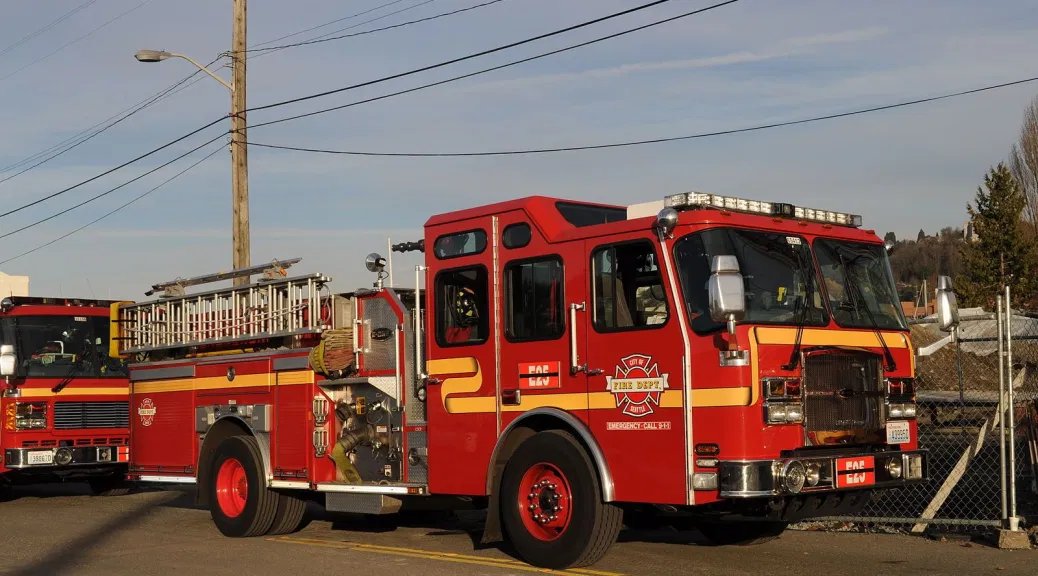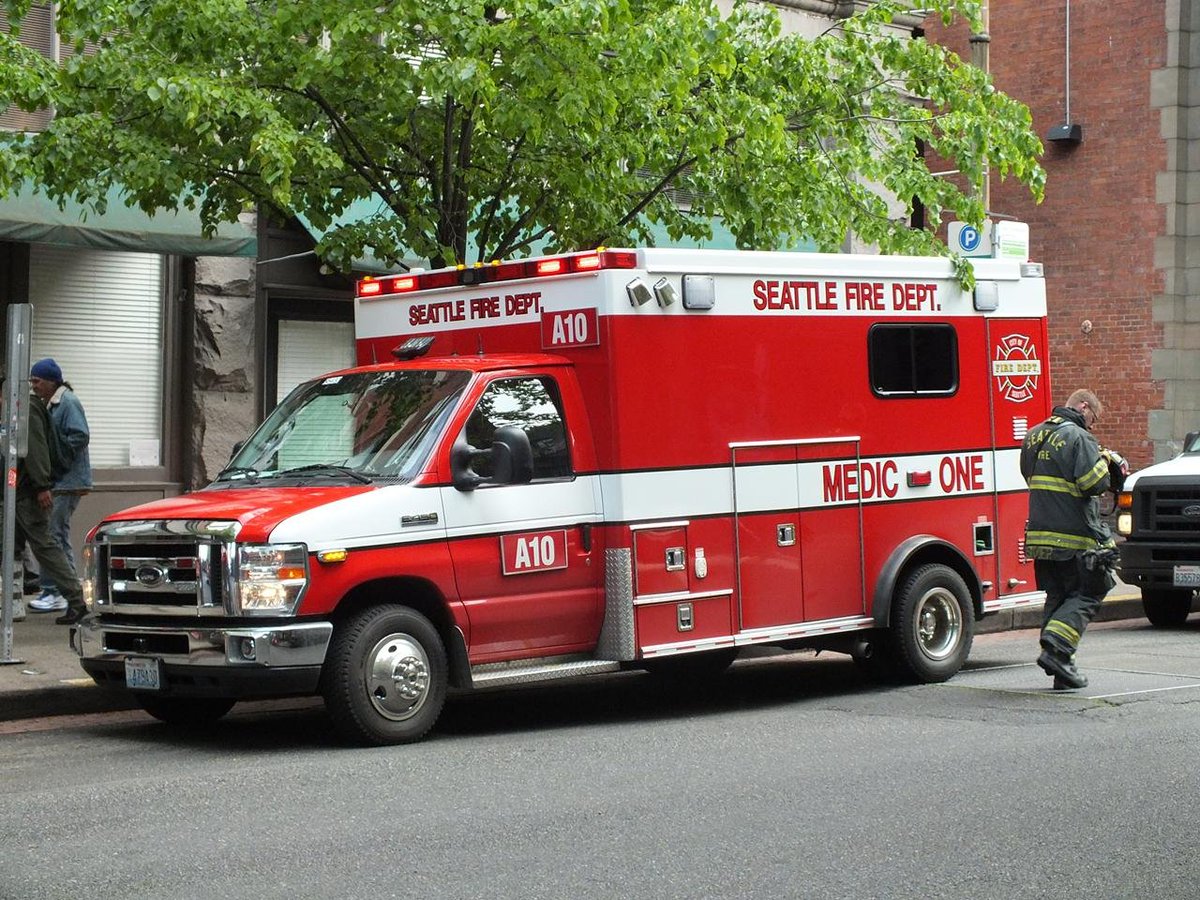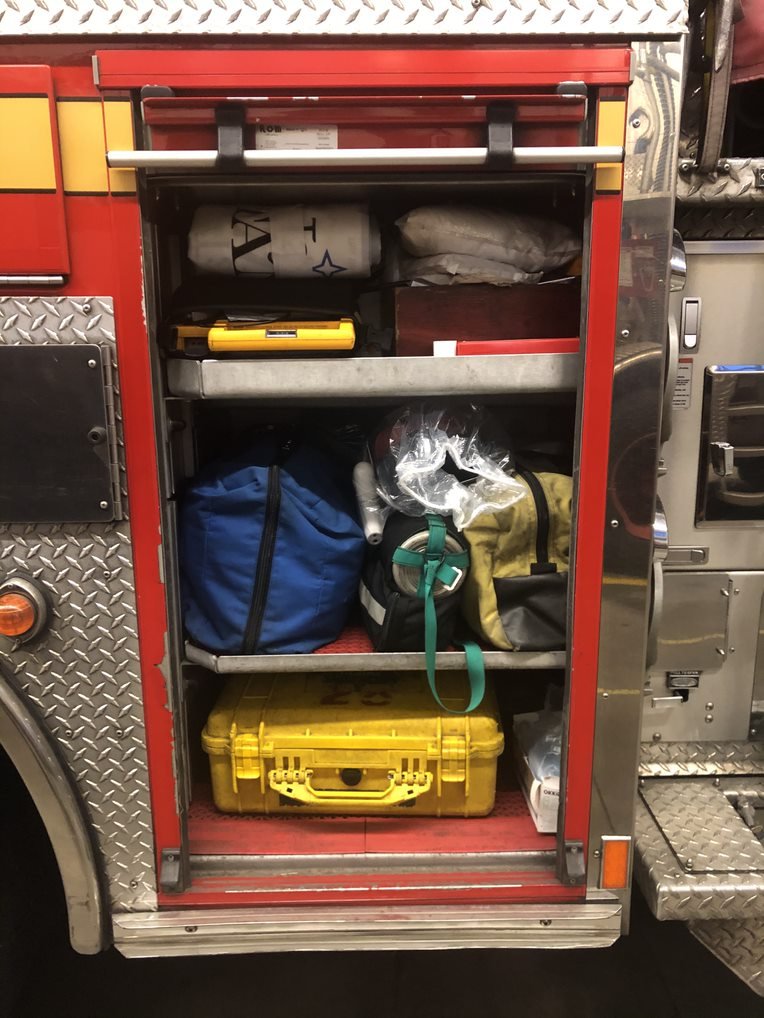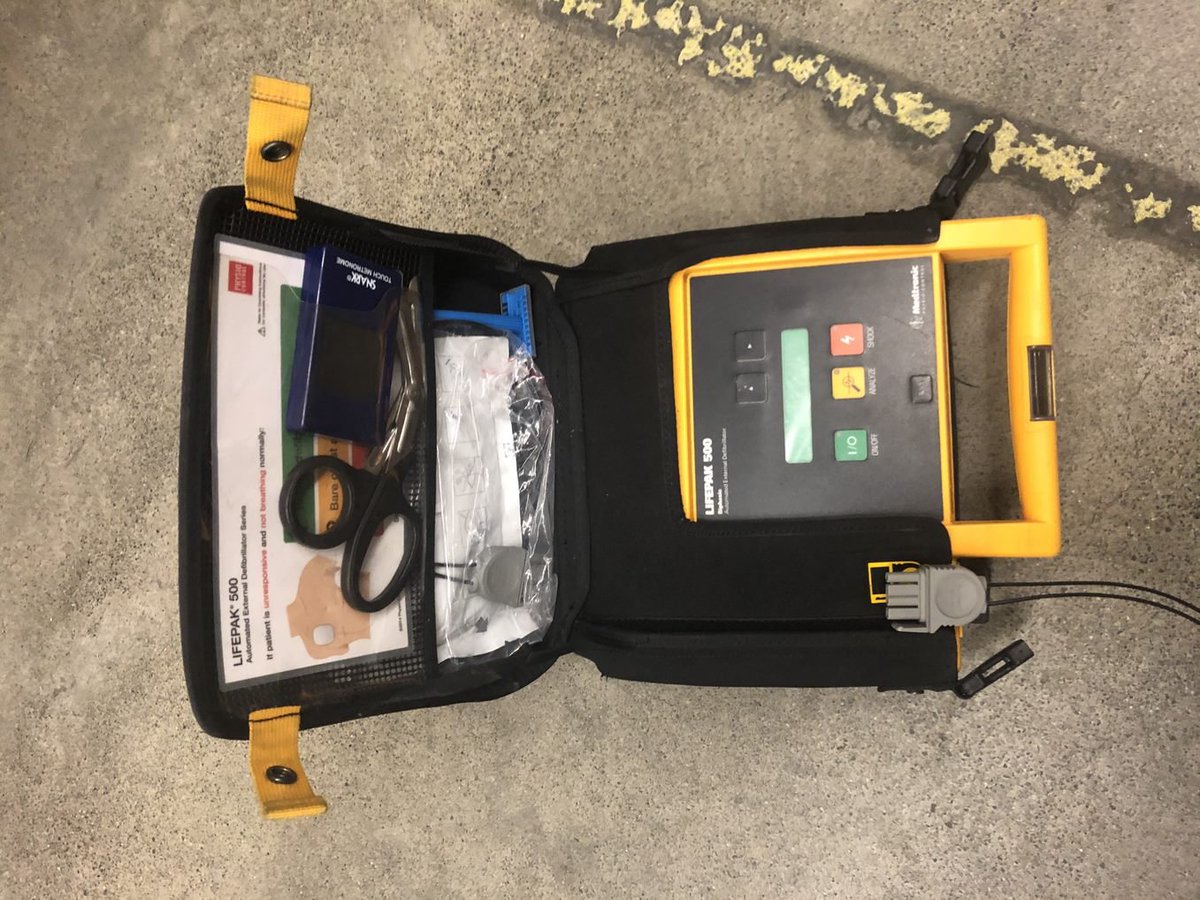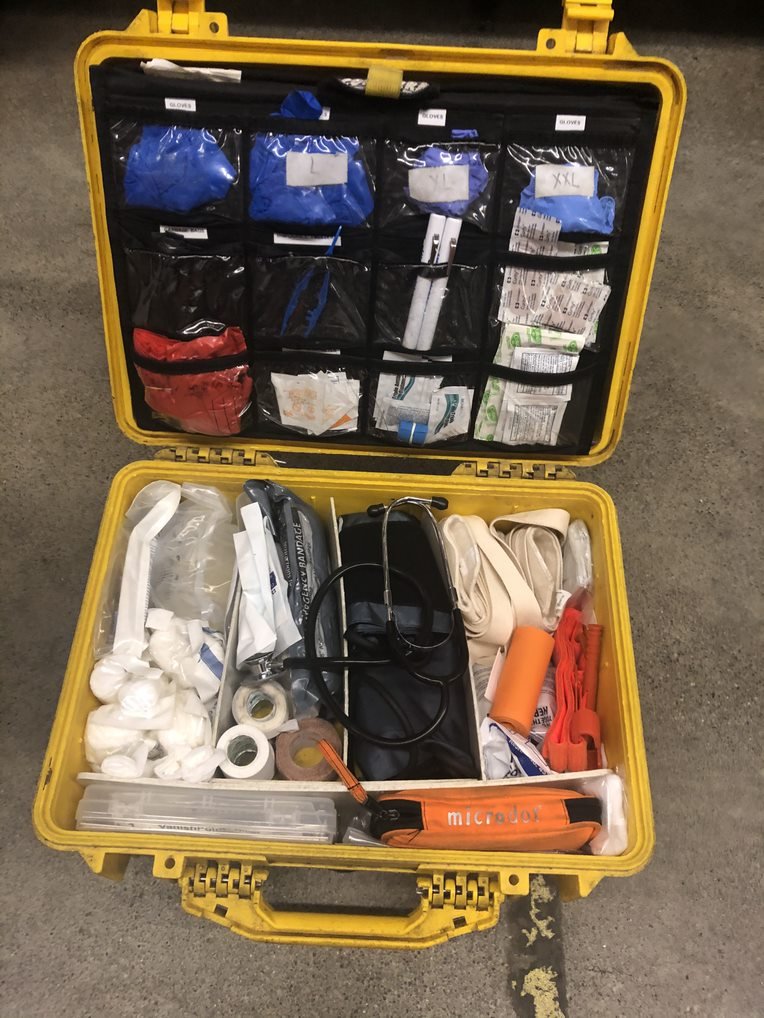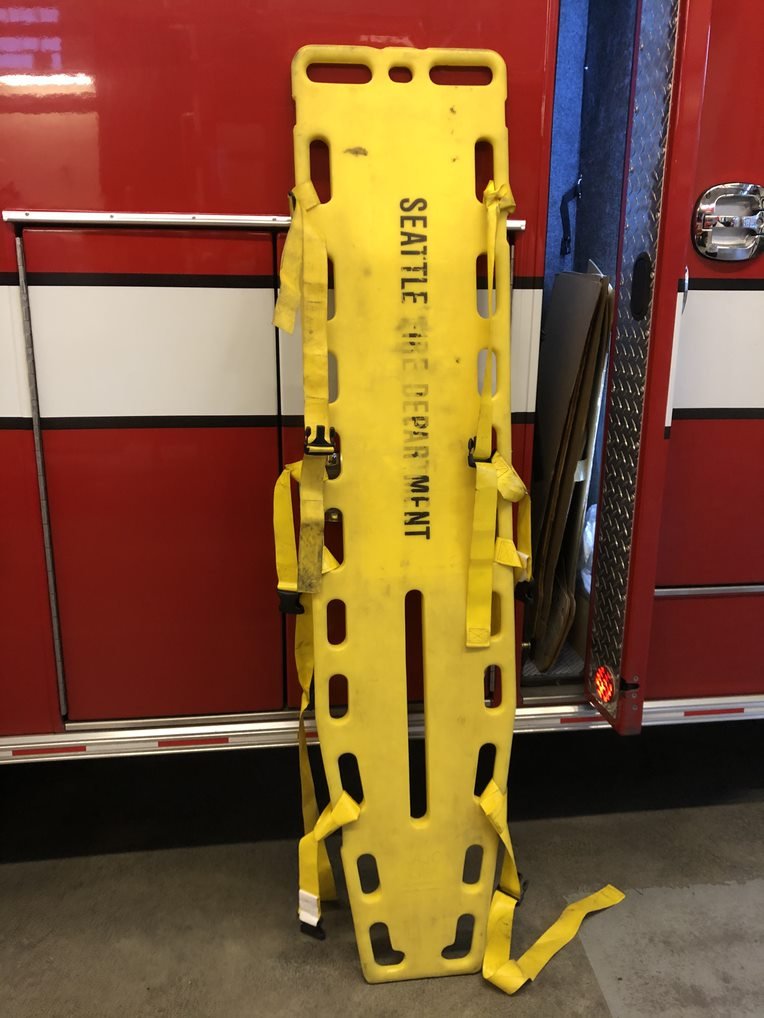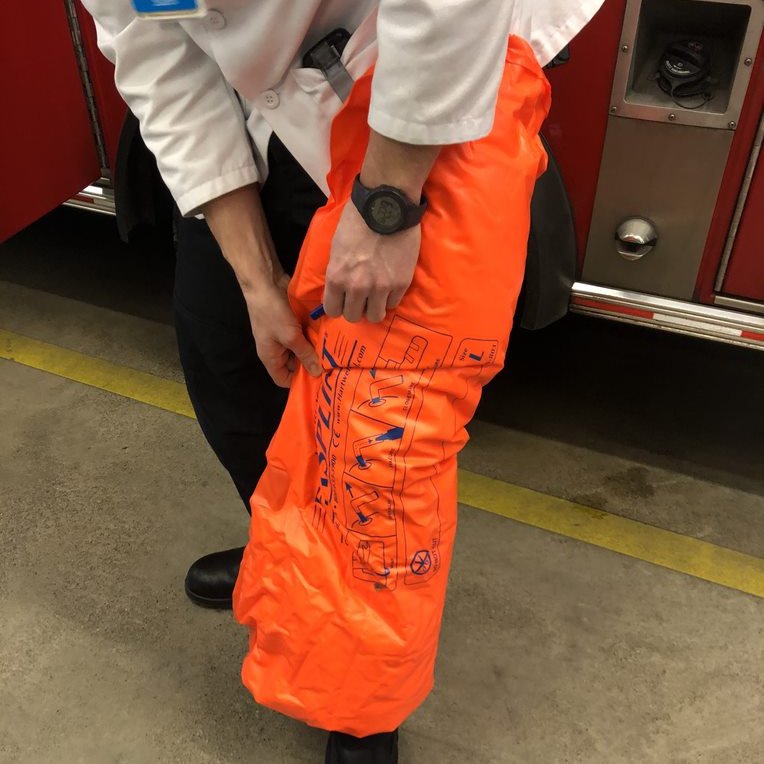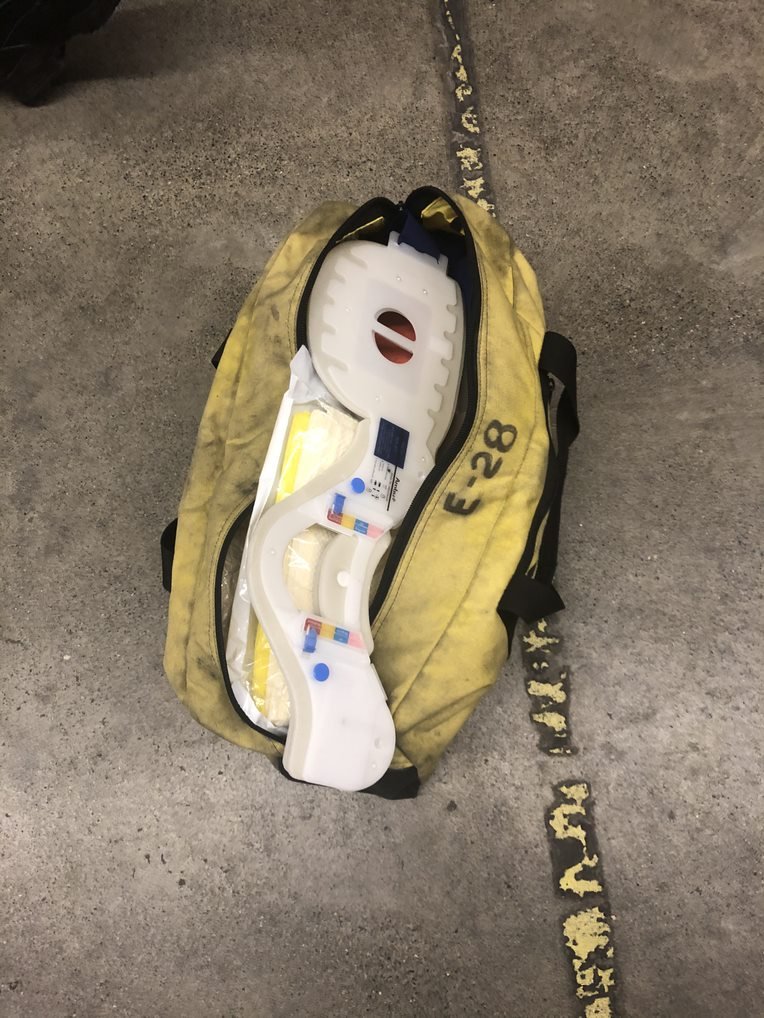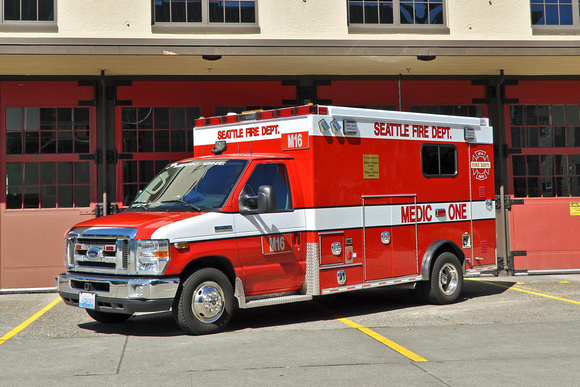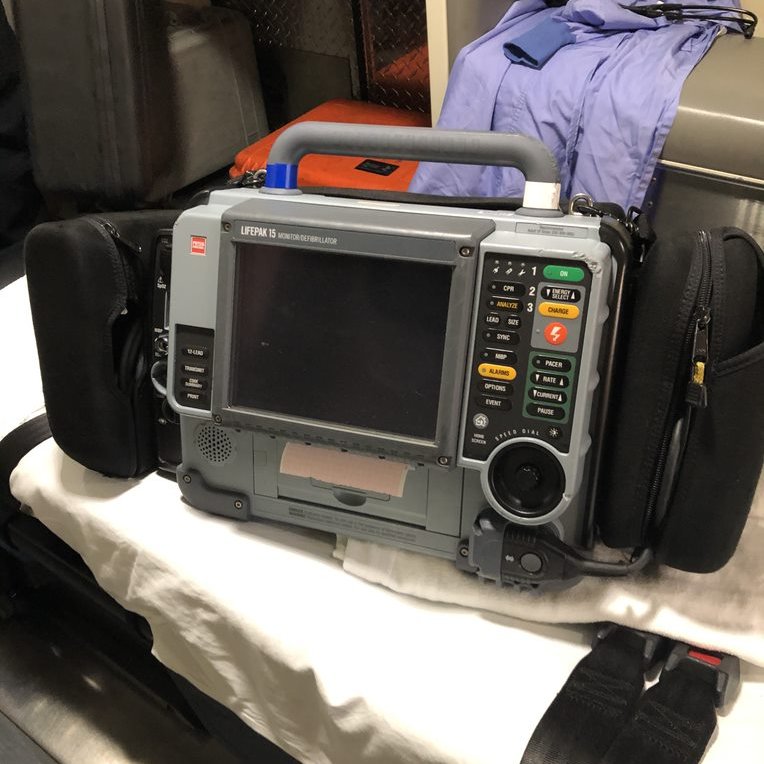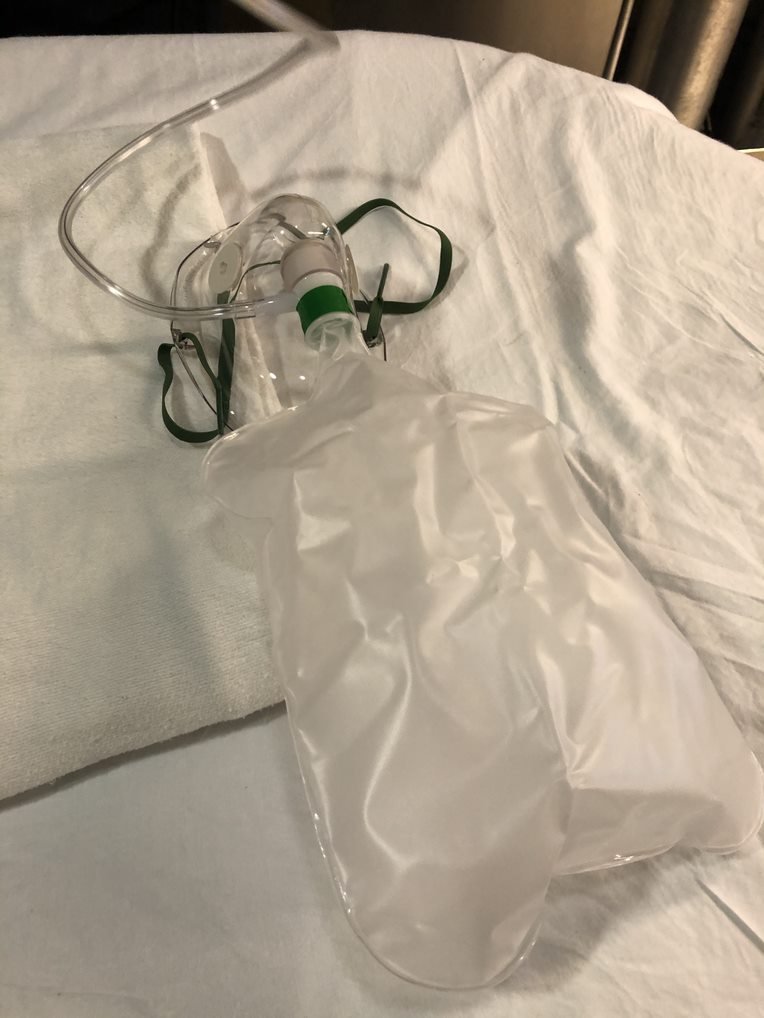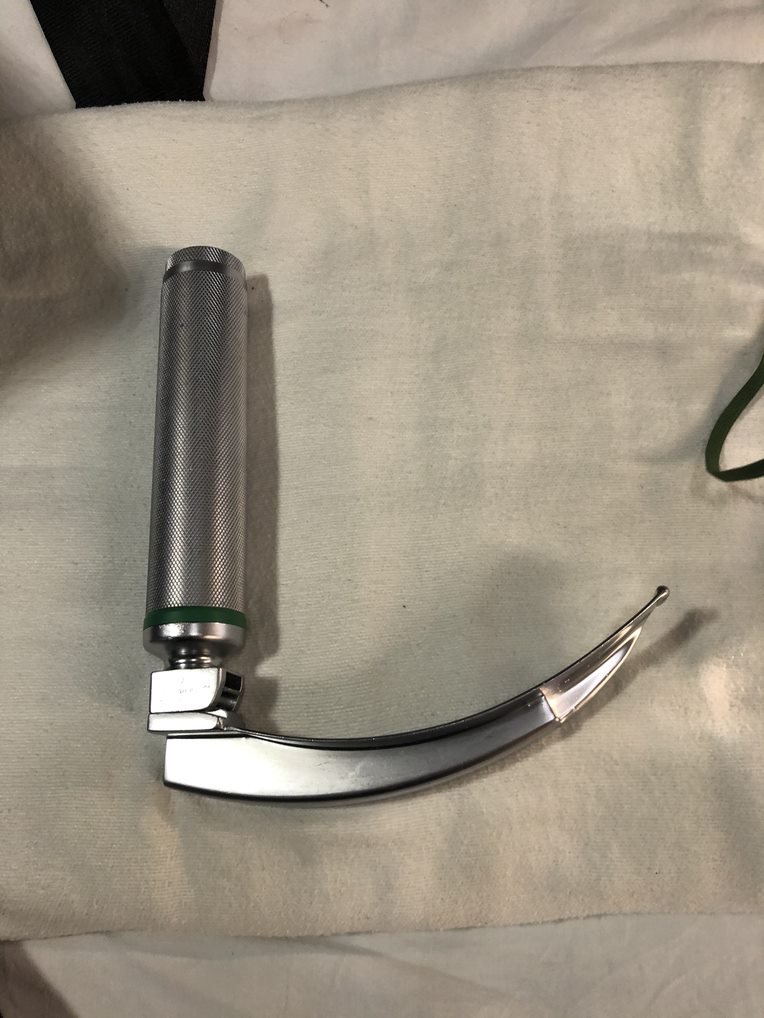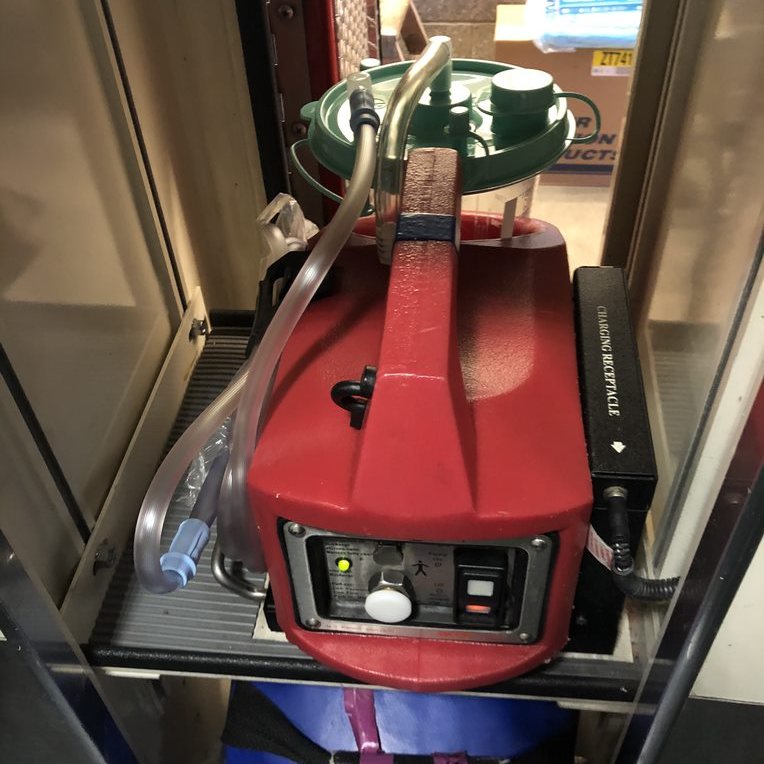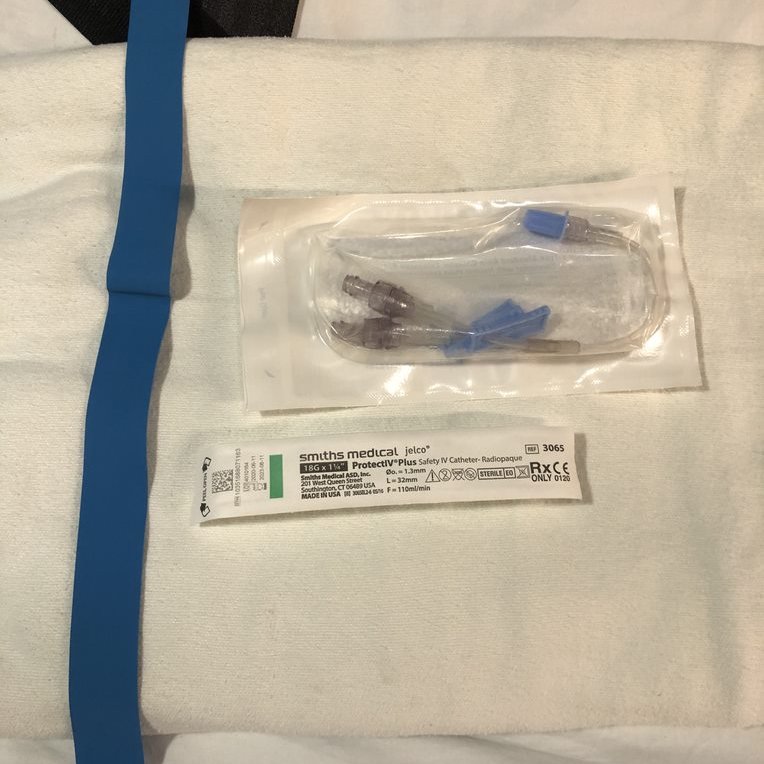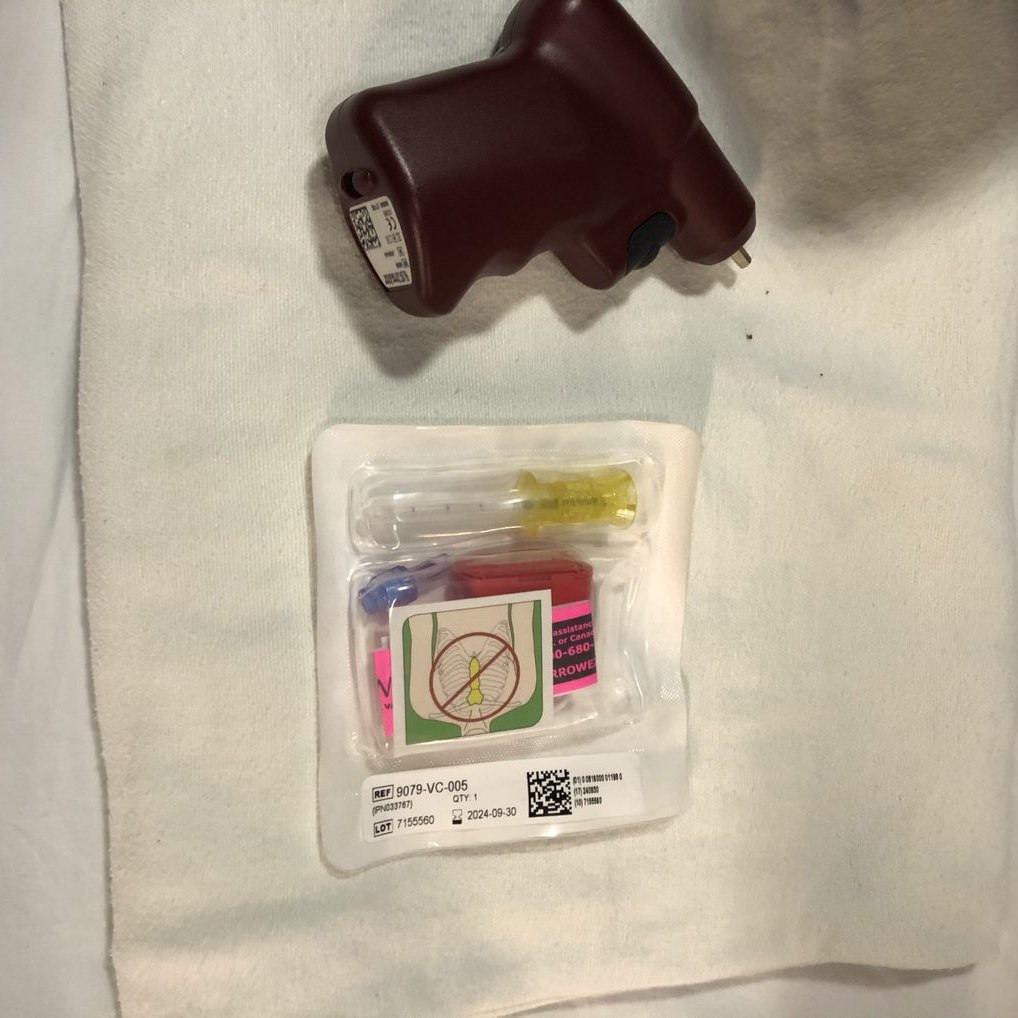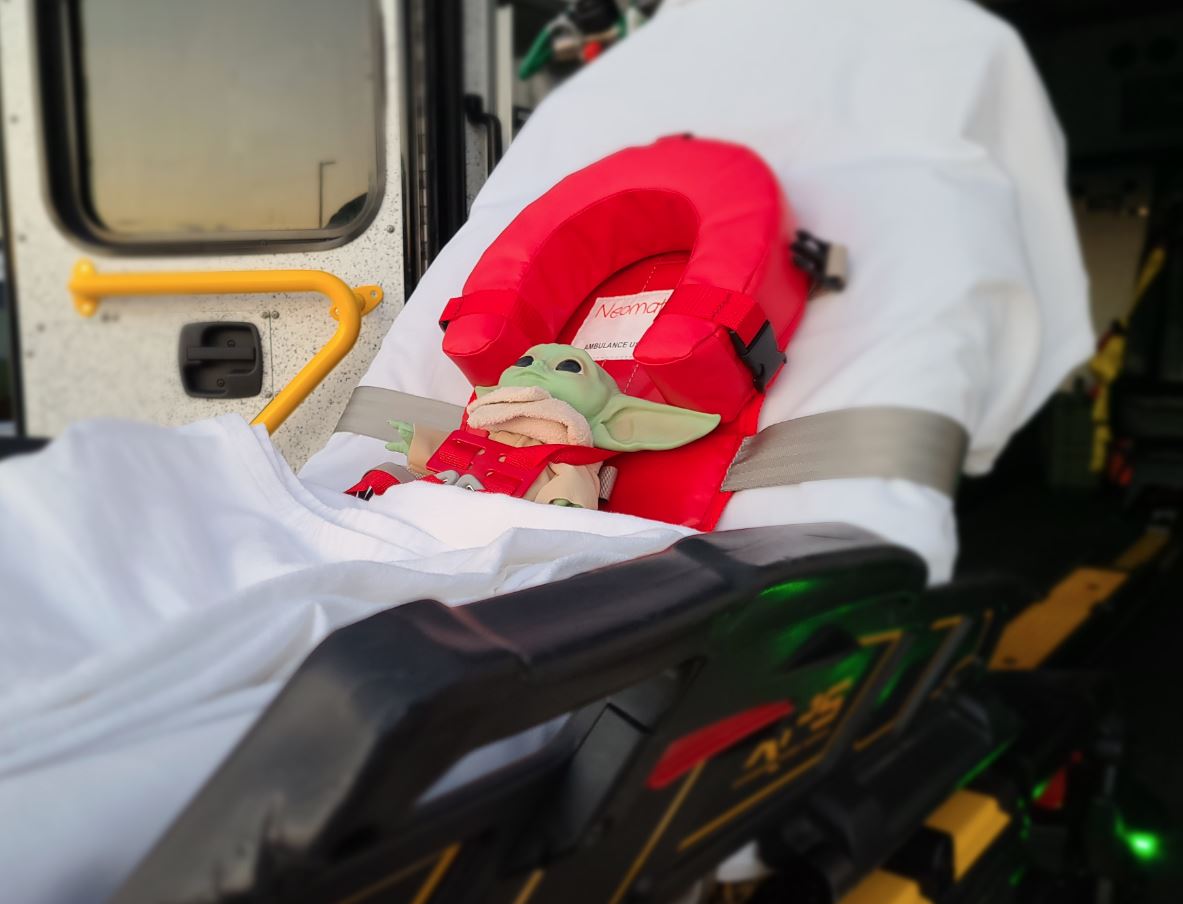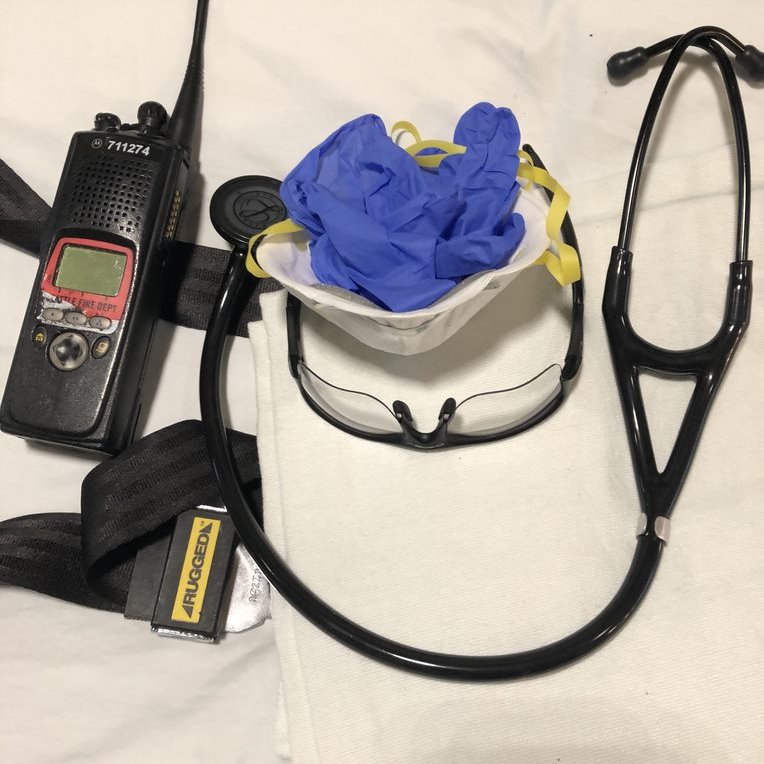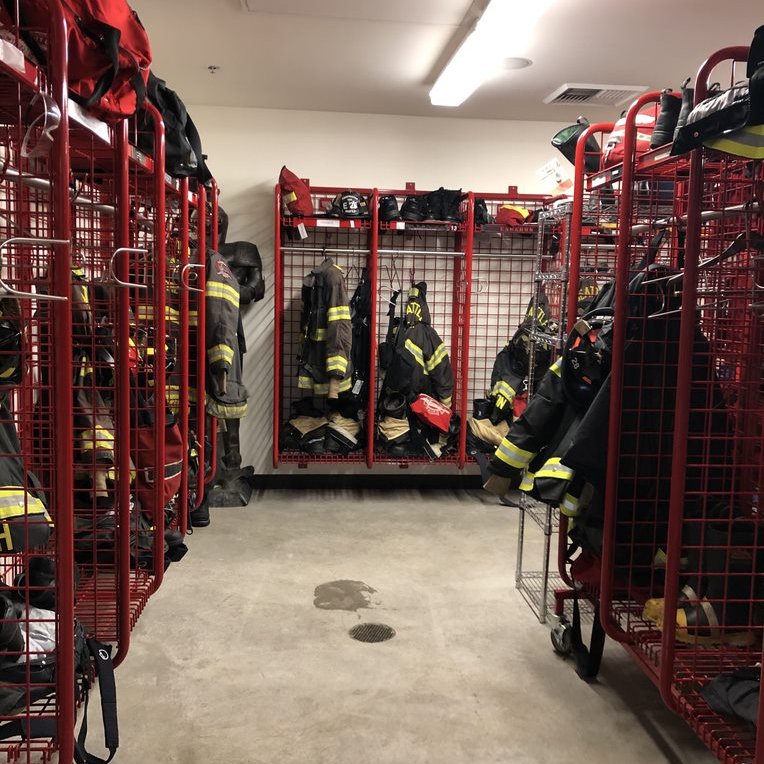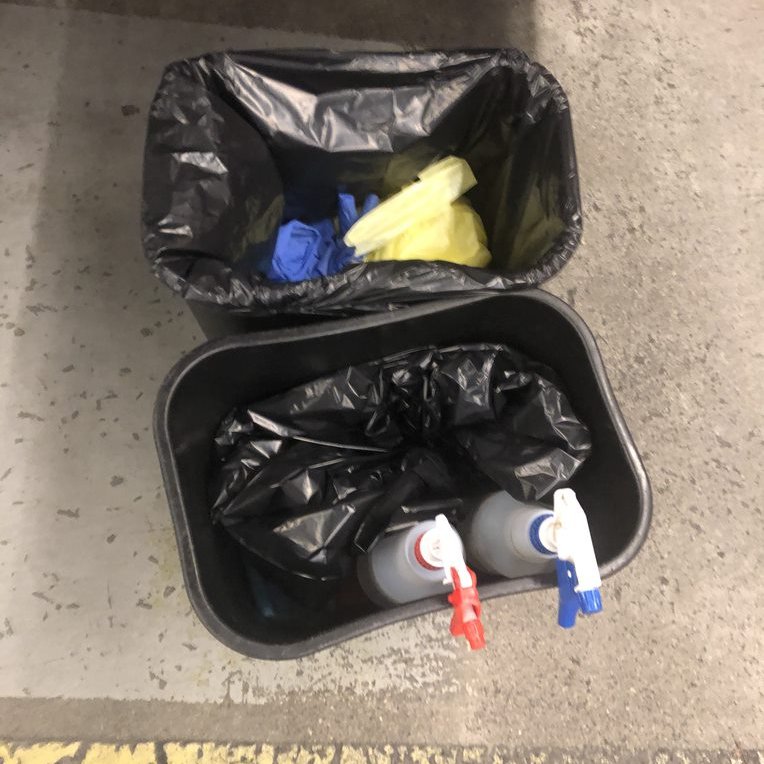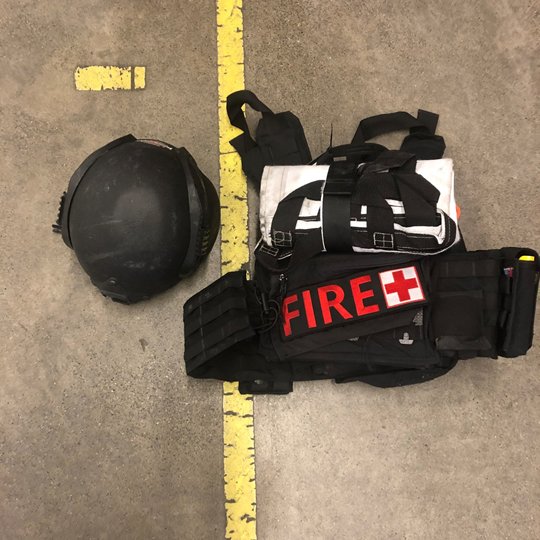 Pop Quiz Time
Pop Quiz Time
What's the most important equipment on an ambulance?
This was a trick question, it's the providers' brains (although I vote the defib is a close second).
But you can't touch those, so in honor of #TouchaTruckTuesday here's some of the gear you could expect to see in a tiered fire-based EMS system.
(A by @CatherineCounts)
by @CatherineCounts)
But you can't touch those, so in honor of #TouchaTruckTuesday here's some of the gear you could expect to see in a tiered fire-based EMS system.
(A
 by @CatherineCounts)
by @CatherineCounts)
When you call 911 in Seattle the first company to show up is probably going to be an Aid Car or Engine. Staffed with 2 or 4 firefighter/EMTs they are the backbone of our system.
The compartment they use more often than not is small, but mighty, and includes an AED, oxygen, and an aid kit filled with most of the supplies an EMT needs to evaluate/triage a patient.
For patients with a traumatic mechanism of injury they also carry a backboard (more on that later), c-collar, and EVAC-U-SPLINTS.
Assuming a patient is sick or injured enough to require more advanced care/evaluation a medic unit (aka ambulance to non-Seattle folks) will be dispatched.
Staffed with 2 medics they provide hospital level care in the prehospital setting. https://www.seattle.gov/fire/about-us/about-the-department/operations/medic-one
Staffed with 2 medics they provide hospital level care in the prehospital setting. https://www.seattle.gov/fire/about-us/about-the-department/operations/medic-one
In our system all providers are firefighters who initially went through EMT school during drill school which gives them a couple hundred hours of EMS training.
The paramedics go through an additional year of intensive training (2000+ hours) before working on a medic unit.
The paramedics go through an additional year of intensive training (2000+ hours) before working on a medic unit.
The monitor/defibrillator allows medics to review the heart rhythm (EKG), oxygen saturation, end tidal carbon dioxide (a measure of metabolism & perfusion), as well as deliver shocks if needed.
I also use this data extensively for post-OHCA review.
I also use this data extensively for post-OHCA review.
For patients having trouble breathing crews can start with a non-rebreather and then if needed work our way up to bag-valve mask or even intubation.
The suction is used to help clear any fluids during intubation.
The suction is used to help clear any fluids during intubation.
We carry direct laryngoscope blades (Macintosh) and advocate for bougie/eschmann/stylet use on all attempts to help increase first pass success (intubating on the first try). https://twitter.com/UWashEM/status/1339674326337867776?s=20
Most of the patients our medics transport get some kind of vascular access for fluids or medications. An IV is always the first try, but since the sickest patients need two sites of access sometimes intra-osseus (IO) access is required (goes into the bone marrow).
For patients that are up a flight of stairs without elevator access crews can use the special "stair-chair" to bring them down.
Although sometimes a stokes basket is used to lift them from where they are to where the units can access them. https://twitter.com/seattlefire/status/1049716855768723456?lang=en
Although sometimes a stokes basket is used to lift them from where they are to where the units can access them. https://twitter.com/seattlefire/status/1049716855768723456?lang=en
Once patients are in the transporting unit they stay secured during transport via seat-belts on the gurney or a car seat if they are a pediatric patient.
Some agencies use a device such as the Neo-mate (pictured).
Some agencies use a device such as the Neo-mate (pictured).

 Read on Twitter
Read on Twitter